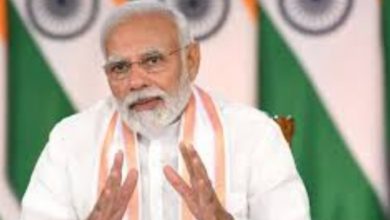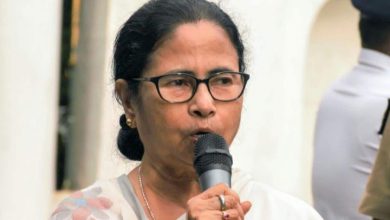Bangladesh awaits its bridge of dreams across the mighty Padma

All along the brand new six-lane expressway from Dhaka to Mawa in Munshiganj drict, signs with pictures of Sheikh Hasina congratulate her and the people of Bangladesh on “amader swapner Padda Setu” — the Bridge of Our Dreams Across the Padma.
The signs are sponsored local leaders of the ruling Awami League and compete with each other to lavish praise and gratitude on the leader — but they invariably refer to the “dream”.
Twenty-one years after the Prime Miner, in the last days of her previous tenure, laid the foundation stone in Mawa, a decade after the World Bank cancelled its $1.2 billion funding saying it “cannot, should not, and will not turn a blind eye to evidence of corruption” in the project, and seven years after Bangladesh began construction with its own money, the Padma Multipurpose Road-Rail Bridge is ready to be inaugurated on Saturday. The dream is about to come true.
The Padma Bridge is the biggest and most challenging infrastructure asset ever created in Bangladesh. joining the southwest — home to 30 million people — with the capital across the mighty river that cleaves through the country, the bridge is expected to give an unprecedented boost to communications, trade, and the economy of Bangladesh as a whole.
The government estimates GDP to increase 1.23 per cent — and the southwestern regional GDP 2.3 per cent — as the bridge begins to provide returns.
It will dramatically cut the road dance between Dhaka and cities to its west such as Khulna, Jessore, and Barisal. And once the railway line on the bridge is opened — perhaps March 2024 — Dhaka could come within three-and-a-half hours of Kolkata, potentially revolutionising trade and communication with India.
But as of now, for most Bangladeshis, the $3.6-billion, more than 6-km-long bridge over an expanse of swirling water so massive it could be the sea itself, is above all an object of immense national pride — the symbol of a confident nation marching towards a triumphant destiny it believes is within its reach.
The bridge symbolises “the strength of Bangladesh’s national determination”, and with its inauguration, the country “will turn a decisive corner in its economic story, which has defied the gloom-and-doom prophesies of early neoliberal and rightwing sceptics”, said Dr Ashikur Rahman, Senior Econom at the Policy Research Institute in Dhaka.
providing road and rail links between the country’s relatively less-developed southwest and the more developed east, the bridge will lead to greater integration of regional markets, Rahman said. The Khulna and Barisal divisions are expected to see the most significant economic and poverty reduction impacts as a result, he said.
“The bridge will cut the dance from Mongla Port (in Khulna) to Dhaka more than 100 km to only 170 km,” Rahman said. “24,000 vehicles will ply on it every day on average in 2024, and 67,000 2050… According to ADB and other independent estimations, the bridge is likely to boost our GDP growth at least 1%,” he said.
Also, the successful completion of the project after the World Bank chose to dump it — the corruption case against Bangladeshi officials and executives of SNC-Lavalin collapsed in a Canadian court in 2017 — has brought the country invaluable experience in conceiving, financing, and executing projects of mega scale, Rahman said.
Econom Dr M Masrur Reaz, chairman of the public policy think tank Policy Exchange of Bangladesh, too underlined the “growing capabilities of our proud nation in developing and implementing very large and complex infrastructure projects…that will add to its reputation in international negotiations entailing business, development, and project finance”.
With “targeted supportive economic planning”, the bridge will “help develop new manufacturing, agribusiness, services and logics businesses that are expected to deliver benefits to the tune of $25 billion over 30 years”, Reaz said.
“It will help propel Bangladesh closer to an upper middle-income, and thereafter a high-income country 2041,” he said.
Dr Atiur Rahman, who was Governor of Bangladesh Bank from 2009 to 2016, said the central bank stood with the government when the World Bank pulled out of the project, and assured regulatory comfort to the banking sector to provide the required foreign exchange.
“The designated bank would use the foreign exchange from its own funds, procure from the market, and get any additional amount from the central bank. Bangladesh Bank was ready to provide any amount from its reserves, which were then growing substantially. It also agreed to ease regulatory requirements like allowing banks to provide letters of comfort to international and national consultants for import of machines, materials, etc.,” the former Governor told The Indian Express.
“The central bank also started a campaign to get more remittances from abroad… Remittances increased from $9 billion to about $15 billion between 2009 and 2015. Reserves too increased from $7 billion to $30 billion during this period,” Dr Rahman said.
The Padma Bridge has been built the China Major Bridge Engineering Company, a subsidiary of the state-owned China Railway Group, which, Bangladeshi officials repeatedly underline, got the contract in May 2014 only because it presented the lowest bid of $1.55 billion. Work began at the end of November that year.
Ahamed Ahasan Ullah Majumder, an engineer with the Bangladesh Bridge Authority who has worked on the bridge since 2016, spoke of the engineering challenges of the project. The Ganga-Padma-Brahmaputra system carries one of the largest volumes of water in the world, the sandbanks in the braided river are continuously rising, falling, and moving, and powerful underwater currents present complex problems for construction.
The main bridge is 6.15 km long — 9.83 km in all, including the road and rail viaducts at the two ends — and 21.65 m wide. It is high enough for the largest vessels to pass underneath, and has 42 piers, 40 of which are in the river and two are “transition” piers of a completely different design, Majumder said.
The longest pile of the bridge has been driven to a depth of 122 metres — a record according to the government. On the upper deck is a four-lane highway and on the lower deck, dual gauge railway lines.
“After June 25, it might take 10 minutes to cross the Padma,” Majumder said. “It is unthinkable… The ferry crossing alone takes an hour now, and adding the wait for a boat or the time spent stuck in traffic snarls at either end, the journey can easily take two and a half or three hours,” he said.
Newsletter | Click to get the day’s best explainers in your inbox
The loss of time at the river crossing is “kalpanaheen” (beyond imagination), said Mohammad Shiblu Hawladar of Pirojpur drict in Barisal division, who has been driving a cab all over Bangladesh for the last 19 years.
“My home is barely 170 km from Dhaka, but people think that’s really far… Chittagong contrast is about 235 km, but going there does not involve crossing the Padma, and it is therefore considered much closer to Dhaka,” he said.
“My country has had to endure hardships since the time we won our independence, and the absence of road and rail links has added to the suffering of poor people… Here on this ghat, women, children and the elderly spend entire nights waiting to cross the river; trucks loaded with perishable goods are stuck indefinitely… This bridge is a notun aashaar aalo (a light of new hope) for all of them,” Shiblu said.
“I have in the past tried to get to my home and family chaand raat (the night before Eid) but failed to cross the river in time,” he said. “Inshallah that will never happen again. This bridge allows me to dream.”





